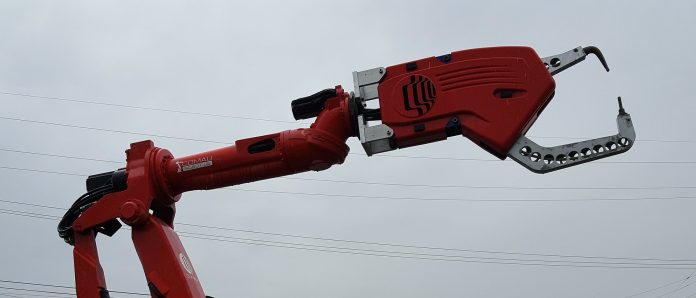The calibration of robots ensures that machinery is working efficiently and correctly. From axes to sensors and cameras, every robot needs to be calibrated in some way. At first, this procedure may appear intimidating. Fortunately, using the right strategy is straightforward.
The makers of robots say that their products are accurate and repeatable. However, proper robot calibration is required for all these specifications to work.
There are two main types of available robot calibration systems:
• Dynamic
• Static
While dynamic calibration is used to identify parameters influencing primarily motion characteristics, static calibration is used to identify those parameters that mainly influence a robot’s static positioning characteristics. Geometrical parameters like joint-angle off-sets and axis geometries are the primary focus of static calibration systems.
Since parameters can only be measured from the robot’s poses, static robot calibration modeling includes both geometrical and non-geometrical parameters. Compliance, form errors, gear backlash, and temperature-related expansion are non-geometric parameters. Dynamic calibration is possible once the robot’s static parameters are identified. This kind of calibration aims to ascertain the robot’s dynamically related characteristics.
Is it essential to calibrate robots?
You might wonder if calibrating your robot is even necessary.
After all, when the robot leaves the factory, shouldn’t it already be calibrated?
In robotics, a distinction is essential to comprehend: although robots are intended to be highly repeatable, their initial accuracy tends to be low.
You can think of repeatability and accuracy this way if you’re unsure what they mean. If you told the robot to draw six points in the same spot in space, it would look like this:
• Accuracy indicates the degree of proximity between those six points and the desired location.
• The repeatability of the six points indicates their proximity to one another.
Both the physical robot and its design have repeatability. However, calibrating a robot is necessary for its accuracy.
Why is robot calibrating so important?
For a robot to function correctly, calibration is essential. If properly calibrated, robots can be extremely precise and effective. To achieve maximum accuracy, this tunes up its components and sensors. It is comparable to wearing glasses to improve one’s vision. Robots need to be maintained frequently even if their components or environment haven’t changed.
Accuracy is essential for robotic automation to succeed in any industrial setting. Industrial machinery is a prime example of the significance of robot calibration. Imagine a robot making a particular car part in bulk. It could produce hundreds or even thousands of defective parts if incorrectly calibrated.
Calibration regularly is important to performance, maintenance, and safety. Accidents and breakdowns are much more likely to occur if it doesn’t work as intended. A robot that isn’t adequately calibrated can also have problems with care over time.
Three Promising Benefits of Properly Calibrated Robots:
Why Should You Calibrate Your Robot’s Tool Center Point?
A properly calibrated robot has a few compelling advantages. You can get these benefits even with more straightforward TCP calibration methods and tools from the store.
The use of this kind of calibration has three advantages:
- Accurate programming for your application: Programming accuracy is the primary benefit of TCP calibration. A well-calibrated robot will precisely move to the desired workspace location when directed.
- Reduced tool wear for robots: For process tasks in which the robot works directly on the work piece, precise placement can decrease tool wear. With robotic surface finishing, for instance, you can extend the life of your abrasive media.
- Best use of your robot: Out of the box, robots have high repeatability (they always move to the exact location) but low accuracy (they don’t move to the precisespot programmed for them). TCP calibration is a reliable method for ensuring the robot’s high repeatability and accuracy.
What are the available calibration tools?
There is a wide range of equipment and solutions for robot calibration on the market.
There are three common categories of solutions:
- Complete robot calibration system: As previously stated, this service is only required if you want your robot to be as accurate as possible. This is unnecessary for most robot applications.
- A laser tracker is one of the most accurate instruments for calibrating your robot’s TCP. Suppose you don’t want to pay for a full calibration service. This is a good decision if you want the highest possible TCP accuracy without buying or renting expensive laser tracking hardware.
- Off-the-shelf calibration tools: Some TCP calibration solutions use straightforward, pre-made measurement tools.
Conclusion:
A robot calibration system that can increase the accuracy of the robot’s position has been presented. To calibrate robots whenever there is a change in the robot links, such as changing parts or tools, using cooperative robots, specially designed robots, or whenever it is essential to know the actual kinematic parameters of a robot model, the presented work includes a straightforward and attainable method for building robot calibration systems.











